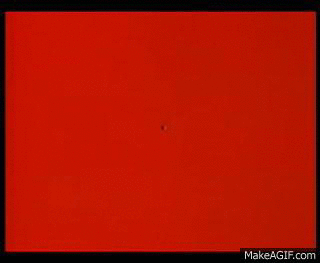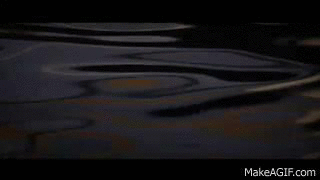From what I’ve discovered, motion graphics were first used as soon as full feature length films came into play at movie theatres; being first used for titles to introduce and narrate movies. This mainly began in the early 1900’s, being used in the first full length movies such as ‘The Great Train Robbery’ and the very first ‘Alice in Wonderland’ (1903). This set the standard and changed the way films were presented up to this very day.
Titles seemed to be simply created, manually being handcrafted onto card and then filmed. From my discovery, ‘credit sequences were presented on title cards containing text.’ ‘Hand drawn white lettering superimposed over a black background.’ (P.18 Jon Krasner)
Watching this I could already see how special effects were being introduced into the industry already! I also saw just how much title sequences had evolved; with titles appearing onto the film and transitions now being introduced. The special effects were created by cinematographer Cecil M. Hepworth which from what I understand, created the fading transition by overlapping two film strips, using varying developing techniques to make one of the strips appear to fade away (http://www.youtube.com/all_comments?threaded=1&v=zeIXfdogJbA&page=1).
By the 1920’s things had escalated quickly.. With the industry now creating full length films out of motion graphics, a new category of film was created. Films were given more of an artistic value and a completely new way of story telling; using unusual shapes and objects to create an abstract theme. Motion graphics was sought as an exciting creation that could make music literally come to life on screen.
Notorious german artists such as Hans Richter, Norman McLaren and Oskar Fischinger really made things take off by experimenting with new techniques and approaches; taking the effect of motion graphics to a whole new level.
Designs were hand drawn, creating animated pictures.

By the 1950’s, motion graphics made a rapid impact to motion pictures. With technological advances, new techniques were done to create graphic animation; taking title sequences to a whole to level.
Motion graphics became elevated to art form (P.18 Jon Krasner), designers such as Saul Bass, graphic design pioneer, (P.23 Jon Krasner) made title sequences be seen in a whole new light..
Saul Bass became the first to revolutionise motion graphics; bringing things to life from his imagination.
During these years it seems like each movie title sequence had to out do the other, animated titles became the next big thing..
Ever since the 1900’s, film titles became necessary to use to define the theme of the film. They seemed to covey a kind of emotion, set the theme for the film and signify a mood to viewers; ‘For example, large, distressed black letters marked horror, while a fine elegant script characterised romance’. (P.18, John Krasner)
“Type is like actors to me. It takes on characteristics of its own. When I was younger, I used to pick a word from a dictionary and then try to design it so that I could make the word to show what it meant”
– Kyle Cooper
Motion Graphics in title sequences were obligatory , with designers such as Friz Freleng and Saul Bass, titles sequences became the highlight of motion pictures.
“They just flipped when they saw it! When we finally got it onto screen and they previewed it, the comment from the press was that the titles were better than the picture.”
– Friz Freleng (P.39, John Krasner)
“The title sequence of a film is like the frame around a painting; it should enhance and comment on what is ‘inside’, alerting and sensitising the viewer to the emotional tones, the story ideas, and the visual style which will be found in the work itself”.
-Walter Murch
From what I understand, a mechanism known as the rostrum camera was used a lot in the 1950-60’s to give an effective motion to graphics.
The camera would be positioned face down, facing the motion picture. Titles were then placed over the film in a slide motion. To create a zoom effect, I presume the film would stay stationary whilst the layer with titles would move up towards the camera. However I am not sure whether this mechanism was used or not.
Still new experimental animating techniques were being tested. ‘In the opening to Cape Fear’ (1991), Saul and Elaine Bass enlarged a sign reading “Cape Fear” on an Xerox machine. Using a kitty-litter box, Elaine put ink in the water to make it more reflective, submerged the sign in water and created ripped with a hair dryer’. (P.26, Jon Krasner)

With the age of computers, motion graphics became more advanced than ever before; now being introduced to the television side of things..
From the 1990’s up to this present day, motion graphics has rapidly evolved and through computers. With the technological advances we are able to cross boundaries and take motion graphics to where its never been before.
Bibliography
Books
‘Motion Graphic Design: applied history and aesthetics’ – Jon Krasner ISBN: 978-0-240-8098
‘Motion Graphic Design & Fine Art Animation: Principles and Practice’ – Jon Krasner ISBN: 0-240-80482-1
Internet
http://www.fastcodesign.com/1665198/the-history-of-motion-graphics-is-longer-than-you-think-video
http://motion-plus-design.com/english/
http://cakeheadlovesevil.files.wordpress.com
http://classicfilmreview.tumblr.com/post/53641498287/alice-in-wonderland-1903
http://en.wikipedia.org/wiki/Cecil_Hepworth
https://www.google.co.uk/?gws_rd=cr&ei=DZZtUsyXO4ue0wXG0YDICA#q=first+film+shown+in+theaters
http://www.youtube.com/watch?v=zuto7qWrplc
http://en.wikipedia.org/wiki/Motion_graphics
http://en.wikipedia.org/wiki/Walther_Ruttmann
http://www.youtube.com/watch?v=aHZdDmYFZN0
http://www.youtube.com/watch?v=FYPb8uIQENs
http://en.wikipedia.org/wiki/Hans_Richter_(artist)
http://en.wikipedia.org/wiki/Oskar_Fischinger
http://www.youtube.com/watch?v=they7m6YePo
http://www.nfb.ca/playlists/donald_mcwilliams/mclaren/
http://en.wikipedia.org/wiki/Saul_Bass
